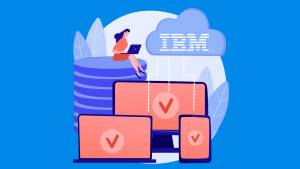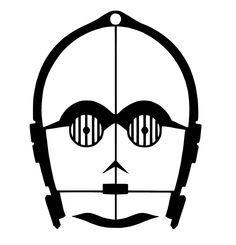

 Author: Geoffrey Hamm, Sr. Automation Advisor
Author: Geoffrey Hamm, Sr. Automation Advisor
Introduced early last year, IBM brought Cloud Paks to market with the intention of helping their clients as they embarked on their personalized cloud journey (cloud journeys are like snowflakes – no two are the same).
And they mean any cloud.
Although there are six Cloud Paks offered by IBM –
we are going to focus in on the Cloud Pak for Automation. Sometimes abbreviated CP4A which, although it sounds like an off-brand Star Wars character, isn’t. It is however exceptional at Human-Cyborg relations.
Today we will touch on the key value propositions of the Cloud Pak for Automation and why you should consider it for your organization.
Have you ever had to make a tough decision? Buying a car for instance. It takes time. With a decision of that caliber you want to make sure you have all the facts and that you aren’t being too hasty. You want to drive every make and model, compare prices and features, make sure it’s fast enough without worrying the salesman riding co-pilot, etc…
The same due diligence and stress is applied to making an enterprise-wide software choice. In fact, the stakes are much higher because it’s not something you alone will be driving. This could be the software stack you are resting your laurels on for the next 5-10 years (or longer). That’s a lot of pressure!
 With Cloud Pak for Automation, the decision just got easier. Because we are given entitlements to all Digital Business Automation offerings (plus a few Pak-exclusives), we can pick the products we think will best serve us. And if that turns out to not be the case, we can simply switch them out for something else. This alleviates the stress of making an enterprise-grade software decision and leaves us with the freedom to experiment – tailoring our software solutions to perfectly fit our organization.
With Cloud Pak for Automation, the decision just got easier. Because we are given entitlements to all Digital Business Automation offerings (plus a few Pak-exclusives), we can pick the products we think will best serve us. And if that turns out to not be the case, we can simply switch them out for something else. This alleviates the stress of making an enterprise-grade software decision and leaves us with the freedom to experiment – tailoring our software solutions to perfectly fit our organization.
It becomes less like buying a car and more like drafting a diet and exercise routine – fully aware from the offset that we can always change it if we’re not seeing results.
You should feel empowered by your solutions, not trapped by them.
When I was 12, I went on an Alaskan cruise and saw an iceberg for the first time. I’m convinced that every time someone sees an iceberg there’s always someone else within earshot who says, “you know, 80% of an iceberg is underwater”. And every single time they say that, nobody cares. We care about the part above water – the part we can see.
The same is true with software. We want it to work and we don’t care about what’s underneath so long as it works. This is why containerization has been so transformational – it packages up all the stuff that’s underneath and removes the variables, so the part we actually do care about just… works. It doesn’t matter if it’s in the Amazon cloud, the Google cloud, the Microsoft cloud, the IBM cloud, or a “cloud” in your mother’s basement. It just works.
The containers in the IBM Cloud Pak for Automation are Red Hat OpenShift certified. They are also CNCF Kubernetes certified, but they are “optimized” for OpenShift. This advent in containerization allows us to pick and choose what, where and how much – an ounce of Business Automation Workflow on an Azure cloud, a smidge of Operational Decision Manager on premise, etc…
Since the software is containerized, it is inherently portable – both on-prem and on-cloud.

My uncle, who is a Mechanical Engineer and about as detail oriented as they come, once found a flaw in the menu of a local taco place. If he ordered all the components of one of their combos piece-by-piece, it was cheaper than buying the combo itself. Luckily, this is not the case with Cloud Paks.
 With CP4A, you can rest assured that you are getting much better pricing than if you were to purchase the individual licenses separately.
With CP4A, you can rest assured that you are getting much better pricing than if you were to purchase the individual licenses separately.
Cloud Pak pricing centers around Virtual Processor Cores. These Virtual Processor Cores (or VPCs) vary per product and, since the ratio tables might change in the future, we’ll table that for now. Basically, you can think of these VPCs as the currency with which you can pick and play.
The savings run even deeper than the licensing cost. According to IBM, these Cloud Paks were designed to reduce development time by up to 84 percent and operational expenses by up to 75 percent. Keep in mind that this is on top of the general ROI-guided conversations around Automation itself. Rather, this relates to some of the no code / low code accelerators exclusive to the platform (which we’ll talk about in the next section), and the increased portability due to containerization (which we talked about in the previous section). The fact that we can deploy these solutions to any cloud also reduces overhead by letting us make use of what we already have.
In terms of the “Cloud Race”, IBM is a Peacemaker.

My Star Wars fandom might have become apparent earlier in this article when I said that CP4A sounds like a droid’s name. One thing any Star Wars fan knows is that the movies are constantly changing – adding new scenes and modernizing old ones with updated special effects. If you watched the 1997 re-release of A New Hope for instance, you may have noticed a scene in which Han talks to a very CGI-looking Jabba the Hutt. In terms of the Star Wars franchise, these additions are usually a backwards step. Not the case with Cloud Paks. There are quite a few newcomers, or Cloud Pak-exclusives, and they are all welcomed additions:
Pre-built catalogues of AI-powered “digital workers” (Automation Digital Worker), no-code and low-code development tools for applications and workflows (Business Automation Studio, Business Automation Application Designer, and Automation Workstream Services), and real-time, customizable dashboards with all the underlying data being sourced for you behind the scenes (Business Automation Insights).
For all intents and purposes, Cloud Paks are the cognitive future of IBM DBA. They collect information across all your applications… and emails, file servers, Sharepoint, SAP, etc… (note the Content Collectors) and creates these “lakes” of data. These data lakes can in turn be used to feed Machine Learning algorithms with the volumes of data they require to return valuable insights back to the business – next best step, for example. Thus, by pursuing Cloud Pak, you are passively setting yourself up for success in the cognitive future… which by the way, Gartner predicts that by 2022, ONE in FIVE workers will RELY ON AI to do their jobs. I just did the math and that’s only two years away, so the time to lay foundation is now if you want to remain competitive.
It’s not just feature-rich, it provides a rich future.

To recap, Cloud Paks are not like buying a car, they are not like icebergs, they are not like combos at Tulsa-based Mexican chain restaurants and they are not like any unwanted additions to movies that got it right the first time.

They are less stressful, more portable, less expensive and more feature-rich.
…they truly Pak a Punch!